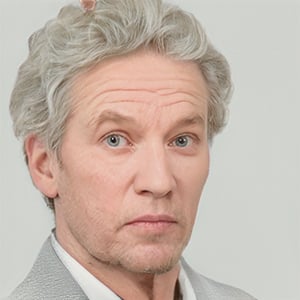INTRODUCTION
Workplace injuries in health and social care
Working in healthcare is crucial, as healthcare professionals provide essential services to patients in both public and private hospitals and care homes. Staff in this field face a high risk of being affected by various types of injuries or harm from objects or people during their work hours.
Healthcare services encompass a wide range of jobs, all of which carry the risk of occupational injury. These risks include repetitive strain, patient handling, needle sticks, violence, slips and falls, sprains and strains, among others (Hardison and Cochran, Attorneys at Law, 2019).
Health and social care workers often work beyond their contracted hours, which is a significant cause of both physical and mental health injuries (Healthmanagement.co.uk, 2020).
Additionally, improper moving and handling practices in health and social care can lead to back pain, discomfort, or injury for patients, as well as musculoskeletal disorders for healthcare providers, which can result in an inability to work (Hse.gov.uk, 2020).
PERSONAL EXPERIENCE IN HEALTH AND SOCIAL CARE ORGANIZATION
As care assistant in this organization my role is to provide the essential needed for patient’s as washing, dressing, feeding, help them with shopping or bills payment, ministered medicine and give emotional support when they need. usury I work with the same patients and in this way, I have the possibility to create a work relationship and this is important for their wellbeing and mine in the same time.
BACKGROUND OF THE ORGANIZATION
Bupa was established in 1947 as an international healthcare organization with the mission "to prevent, relieve, and cure sickness and ill-health of every kind." The organization is dedicated to helping people live longer, healthier, and happier lives by providing services in dental care, insurance, private hospitals, and care for elderly residents. Bupa's success is rooted in its focus on customers and staff, emphasizing the importance of loving one's work in this field. The organization collaborates with partners, including distributors, business associates, healthcare providers, and the community, to make a difference. To support these efforts, Bupa maintains a clear status and purpose, a large amount of capital, strong governance, and exceptional quality for customers (Bupa - an international healthcare company, 2019).
For students seeking psychology assignment help, understanding Bupa’s approach to health and well-being can provide valuable insights into the practical application of psychological principles in real-world settings.
SUPPORTING RESEARCH ABOUT INJURY IN WORKPLACE
Workers in health and social care are at higher risk of incidents and illness caused by lifting, moving patients or physically impact. (Dressner, 2019). Healthcare sector is classified as the most dangerous and unsafe workplace, illness and injuries compare with other sectors are in the top list. The principal injuries in this sector are: musculoskeletal injuries because the request for the professional worker is to handling patients, fractures can be caused by slips or by aggressive costumers, back injuries results of heavy lifting, quick movements or bending, cuts and incisions as the healthcare staff use sharp instruments as needles or surgical instruments, infection and blood borne diseases as HIV caused by organic waste. (Trader, 2019)
Physical trauma in workplace is when the event is during working hours and create an injury or illness. After this for employee and employer the consequence isn’t positive, over to impact in the physical and mental health is an extra cost and can create disorganization in organization. (Amaro et al., 2018)
DIFFERENT DECISION-MAKING TOOLS AND TECHNIQUE:
Bupa swot analysis:
|
Strengths |
Weaknesses |
|
Diversity in policies and products Strong management Customers feedback Hight number of employees Loyal costumer Economic power |
Products at hire price Competition with nhs |
|
Opportunities |
Threats |
|
Future grow Industry in expanding |
Competition with innovation Ceasing to develop in healthcare |
Source: (Bupa.com, 2019)
PESTEL for BUPA
|
POLITICAL |
• A full provision for deferred taxation has to be made as required by Financial Reporting Standards (FRS). The government expects the company to provide access to disabled people. |
|
ECONOMIC |
• During inflation, people have less money to spend on leisure activity. |
|
SOCIAL – CULTURAL |
More and more people are becoming ill everyday either serious or minor, and NHS waiting lists are always huge. They are encouraged to join private hospitals and health cares so they can recover better and get a good service. |
|
TECHNOLOGICAL |
Any new information will be displayed on the Internet for fast and easy access. There are also advanced equipments, technologies that make assessing patients an easy comfort, BUPA Hospital clinical and service quality will be available online. |
|
ENVIRONMENTAL |
If inflation climbs upwards the resulting job losses would mean higher state benefit payments and lower tax revenues, so commitments to BUPA would have to be reviewed. |
Porter's Five Forces
This decision-making tool helps in analysing the competitive environment of the industry in which BUPA is operating:
|
Factor |
Analysis |
|
Bargaining Power of Suppliers |
The organisation BUPA operates on a very wide scale and therefore there are a variety of suppliers that are associated with the health and social care organisation (Hollnagel, 2016). Therefore, the suppliers have relatively much lower bargaining power while dealing with the organisation as they can easily switch over to other suppliers. |
|
Bargaining Power of Buyers |
The bargaining power of buyers is higher because there are many competitors in the industry the major one bing NHS and patients can easily switch over to the other healthcare units that is pricing their services at a lower level. |
|
Existing Rivalry |
The existing rivalry in this healthcare industry is very high because there are huge number of competitors in the industry and their exists a cut-throat competition. Therefore, pricing needs to be done in a competitive manner where there are so many organizations are giving similar services. |
|
Threat of New Entrants |
The industry operates on the goodwill and trust of the patients which is a time-consuming process (Haynes,, 2017). Therefore, the threat of new entrants is extremely low because they have not developed their reputation and goodwill similar to BUPA. |
|
Threat of Substitution |
The threat of substitution is low because the services that are being provided cannot be easily serviced by other competitors as well because it requires professional expertise to deliver services at a similar level (Haynes, 2017). |
ROOT CAUSE OF THE PROBLEM
Fishbone analysis
The cause and effect diagram are a helpful tool for find the causes of problems and potential root causes for find a solution. Finding all the potential causes is possible to remove the problem. The name of Fishbone diagram come from the form of diagram, is like a skeleton of fish. For use Causes and effect we need to identify the problem, the major factors, explore each one to fine specific causes after analysing the diagram. (1, 2019)
In this case we use Fishbone diagram for identify the root cause of injuries in health and social care workplace.
The major problems that can be identified in the BUPA organization are:
- The safety of the employees is at the risk of exposure and this is mainly when the employees or the staff is not adequately trained to deal with the different tasks and the patients. This can also arise when the employees lack expertise regarding the handling of the different equipments (Bupa - an international healthcare company, 2019).
- When the operator or the medical professional is stressed and not satisfied with the work place culture, it often leads to the lack of adequate concentration and this can again lead to the workplace injuries.
- It is possible that the instruments or the raw material that is being used is not of proper quality i.e. the safety instruments are not adequate and lack the proper standards. This also increases the exposure to the employees developing workplace injuries.
PROPOSED SOLUTION
The root causes of the problems regarding workplace safety of employees in BUPA has been discussed and identified. The best solution for reducing the risk of injury amongst the employees would be to:
- There should be the development of proper training schedules for the employees that will ensure that they are swift and confident with their actions. This will be done on a regular basis so as to minimize the chances of employees becoming clumsy in the job that they are required to perform. The employees will also be able to gain regular knowledge regarding the manner in which different equipments are to be used so that the chances of hazards can be minimised and the safety levels can be increased.
- There should be proper warning signs and posts that make the employees aware in case there are any hazardous situations (Healy and Goode, 2018). This will tend to make the employees aware about the potential threats and they will exercise better caution and measures in order to take appropriate steps.
- The work pressure shared by employees should be managed i.e. they should not be stressed too much and the employees should not be overloaded with work developing proper balance between work. This will ensure that while doing there work, they are able to concentrate on the task that is at hand.
- When the employee will be happy at the workplace, their efficiency will automatically increase because they will be able to provide the care to the patients with the equivalent energy and care level without getting tired easily.
- When the employee will have fixed working schedule that is operating in a relaxed manner, then it will make the employees more productive as they will be definite regarding what are the tasks that they are required to perform and how can they perform such tasks.
EVALUATION OF PROPOSED SOLUTION
The solution that has been developed must address the needs or requirements of different stakeholders and the interested parties for whom the solution is being presented. The solution that has been developed can be evaluated on the basis of development of certain criteria i.e. the solution that has been developed is correct or not and will yield the desired results or not, can be evaluated in following manner:
- The solution strategies that have been developed, will increase the satisfaction and motivation level in the employee where they will have clear segregation between what duties and tasks are they required to perform and what are the latest techniques or recent knowledge related to the tasks that are to be performed (Paton and McCulloch, 2019). This enhancement in their satisfaction level will automatically make them more prone to work in the organization where they have clear duty sets and the work hours or duties are set so that the physical exertion is also minimum.
- The solution will also increase the number of permanent employees in the company and this will increase the average tenure of an employee in the company and thus help in avoiding the employees in incurring any significant injuries. They will be more experienced and therefore more swift with the manner in which they perform their tasks and give services to the patients.
- The risk related to the employee developing back pains and other pains while serving the patients relentlessly can be minimised by ensuring that they have fixed working schedules. This will ensure that they are able to serve the patients with same enthusiasm and therefore, this solution will lead to risk minimization as well.
- When the employees will be trained on a regular basis, it will ensure that they are well aware of the consequences that might develop in case the equipments are not handled carefully (Kim, Park and Park, 2016). This will make them more handy with the instruments and increase the number of cautions that they exercise as well thus addressing the problem effectively.
- The solution will although increase the cost of the company by giving training to employees, and they will have to lose the potential revenue also by reducing the work shift of the employees, but the opportunity cost of loosing revenue and increasing cost will be compensated by the increase in the expert and satisfied employees in the organization at a higher rate.
Related Samples: Facilitating Change in Health and Social Care
IMPLEMENTATION PLAN
In order to execute the solutions that have been developed above for addressing the problem of workplace injury at BUPA, there needs to be an appropriate and effective implementation plan. The implementation of the solution that has been developed above can be done by following a series of steps in the organization BUPA that can be illustrated in following manner:
- Planning: In this stage, the organization is expected to plan detailed steps that will be undertaken by them in order to increase the training and expertise level of the employees and address the current problem of workplace injury by implementing the solution. This can be done by identifying the resources that are to be used such as the employee training schedules and equipments, the working hours and structures etc. and the changes that are to be made in the employee working hours thus reducing the dissatisfaction of employees working in BUPA (Hollnagel, 2016). The management can use proper planning tools and documents where they can identify the different activities that will be required to be conducted, the time and costs associated with the implementation of these activities etc. so that the entire plan can be implemented effectively and can help in achieving the desired results by increasing the workplace safety of employees working in BUPA.
- Implement: In this step, the planning that has been done above is implemented in the organization and in order to do this, BUPA will modify the current working hours and schedules of the employees of the company and this will be integrated with the training sessions necessary for the employees as well. The development of proper balance between the work and relaxation along with giving appropriate salary will also reduce the chances of employees over exerting themselves or causing any major injuries. Collectively this will address both major aspects of the problem that is, the chances of employee getting injured will be reduced because they will be more trained and the will not develop physical pains, cramps etc. also because the work schedules will be relaxed, and they will be able to work in a focused manner.
- Monitor and evaluate: After plan has been implemented, it must be regularly evaluated and checked so that the deviations if any can be measured and removed by comparing the planned results with the actually achieved results. This will also help the management of BUPA in identifying that which were the aspects which they could not implement while trying to reduce the chances of workplace injuries for employees and therefore, they will be able to regularly evaluate their performance (Van Eerd and et.al, 2016). This can be done by developing mechanisms such as feedbacks, performance review techniques etc. This will help the management in ascertaining that whether the number of injuries and accidents in the workplace has minimized within the employees due to implementation of the solution that was developed or if the effectiveness was not appropriate enough.
Therefore, this implementation plan will ensure that the solutions that have been developed are applied in the organization effectively and the implementation gap in minimum.
COMMUNICATION PLAN FOR STAKEHOLDERS
Stakeholders are the most interested parties in the business and therefore, all the details and movement of the company should be regularly communicated with them without manipulating them. They mus t be informed regarding the performance of the organization and whether the intended plan is resulting in a profitable manner or not. This can be done in following manner:
- The investors and shareholders of BUPA will be given detail in the annual report of they and the investors can also be communicated on a shorter basis on their requirement.
- Employees would be communicated on a fixed periodical basis where the activities of the company will be reported to them (Amodio and et.al., 2017). They will also be informed regarding the training sessions., changes in the working schedules and the reasons behind such changes.
- The patients and their associated families must be informed regarding the steps that they company plans to undertake for their employees as it will help in increasing the goodwill of BUPA and also increase the trust that patients place in the caretakers and operators that are serving them in BUPA.
- Since BUPA is operating in different countries, it is necessary that they give regular details to the government of the different countries in which they are operating. This is mainly concerned with the revenue that they are earning etc. but the changes in the employee safety and working hour must be in compliance with the safety act of the government of UK and therefore, they are also an important stakeholder of the organization.
REVIEW AND MONITORING PLAN
In order to review and monitor the progress of the plan that has been implemented regularly, the manager at BUPA can develop proper feedback mechanisms such as:
- 360 Appraisal technique where the employees will be asked to give feedback that whether the workplace safety and work culture of BUPA has improved or not (Hall, 2017).
- The benchmarking technique where the company can set a certain target that they have to reduce the employee injuries by a particular number in this year and therefore on this basis this standard figure can be compared with the actual thus giving appropriate results.
CONCLUSION
The research conducted in the report above highlights the necessity of using appropriate planning tools and mechanisms to develop an effective solution for the issues identified within the organization. The report specifically addressed the problem of increased workplace injury risks at BUPA, where a suitable solution was formulated. Additionally, a communication plan for stakeholders and monitoring and evaluation strategies were developed for BUPA. Lastly, the report identified feedback mechanisms, such as benchmarking, that the healthcare organization can adopt to maintain regular tracking.
For ensuring the originality of the content and to avoid any unintended duplication, it is advisable to use a plagiarism checker to verify the report before submission.



















